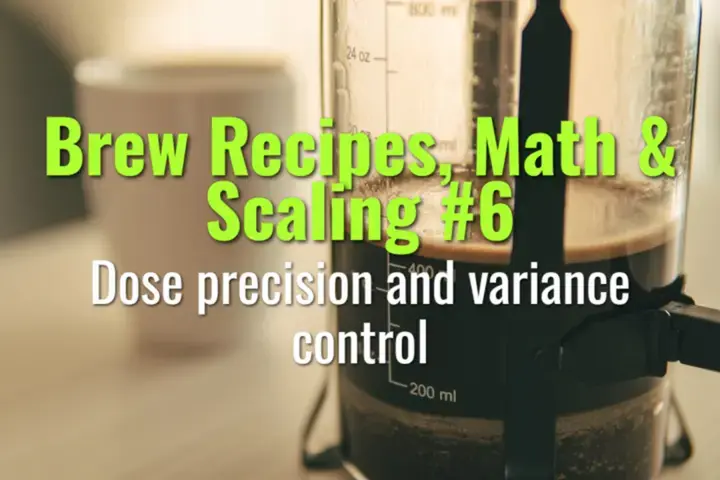Dose precision and variance control
Why dose precision is critical in brewing, how small errors affect strength and extraction, and strategies for controlling variance in recipes.
- Coffee Basics Nerds
- 2 min read
Article 6 of 12 in Brew Recipes, Math & Scaling/

Importance of Dose Precision
- The dose = mass of dry coffee used in brewing.
- Even small inconsistencies (±0.2 g) can:
- Shift brew ratio, altering strength (TDS).
- Impact extraction yield, causing flavor imbalance.
- Precision ensures repeatability across brews, baristas, and locations.
Variance Sources
- Scale Accuracy: Cheap scales may drift ±0.5 g.
- Human Error: Rushed dosing leads to over/under measurement.
- Retention: Grinders may hold back grounds inconsistently.
- Environmental Factors: Static and clumping affect actual delivered dose.
Controlling Variance
- Use High-Precision Scales: 0.01 g readability for espresso; 0.1 g for filter.
- Weigh Dose In & Dose Out: Ensures both ground input and puck weight match target.
- Single-Dosing: Reduces retention variability in grinders.
- Workflow Discipline: Train staff to standardize scooping, leveling, and purging routines.
Impact on Brew Math
- Example: Target = 18 g dose, 270 g water (1:15).
- Error: 17.5 g → ratio 1:15.4 (weaker cup).
- Error: 18.5 g → ratio 1:14.6 (stronger cup).
- These shifts push brews outside Golden Cup balance zone.
Practical Tips
- Create dose tolerance ranges (±0.1 g espresso, ±0.3 g filter).
- Log doses during QC sessions to detect drift.
- For cafés: pre-weigh beans for rush periods to minimize error.
Summary
Dose precision and variance control are cornerstones of recipe consistency. By using precise tools, disciplined workflows, and strict tolerances, baristas and home brewers can achieve repeatable strength, balanced extractions, and reliable customer experiences.